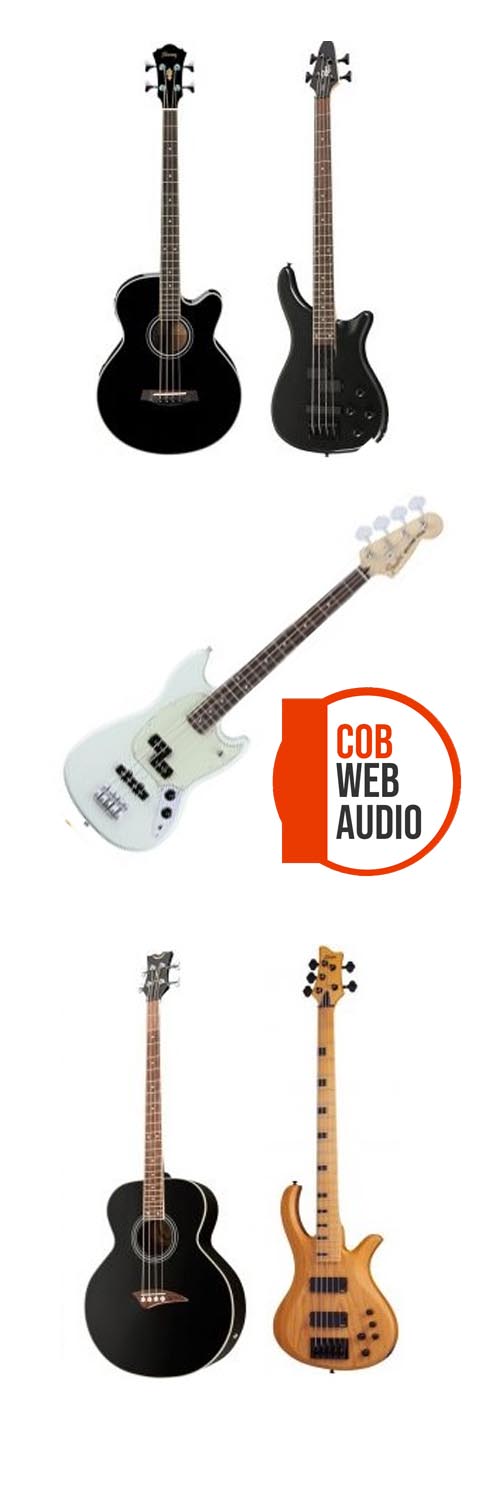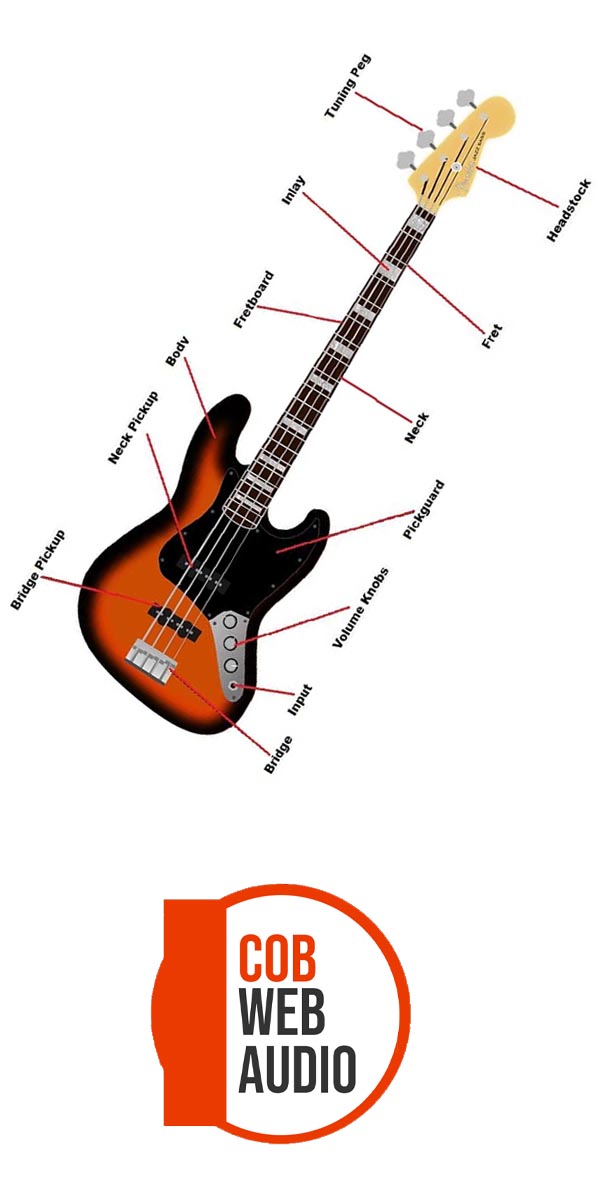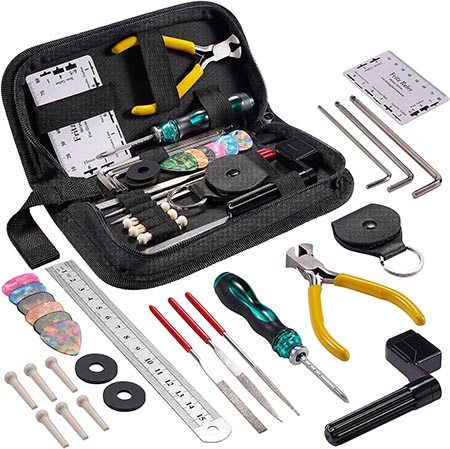Guide to Bass Guitars:
History, Types, and Techniques
Ah, the bass guitar, that groovy sibling to the limelight-hogging six-string we all know and sometimes love. Without the bass guitar, our favorite songs would lack depth, groove, and that foot-tapping goodness. But fret not (see what I did there?); we’re here to dive deep into the low-end world of the bass guitar. By the end of this guide, you might just find yourself wanting to pick up one of these bad boys. I would know I was a six string warrior most of my life.
History of the Bass Guitar
Let me start by staying I’m no historian. But its cool to know how instruments evolved over the years. I’ve been around nearly half a century which is nothing compared to the bass obviously.
Origins and Evolution
Believe it or not, our beloved bass wasn’t always the electrified groove machine we know today. Its grandparent, the double bass, dates back to the 15th century. However, it wasn’t until the 1930s that we started to see an electric version. Thanks to some clever folks who realized lugging around a giant double bass wasn’t the coolest look, the more portable and amplifiable electric bass guitar was born.
Famous Bassists and Their Impact
Now, who can talk bass without dropping names like Paul McCartney, Flea, or Jaco Pastorius? McCartney made the bass sing with The Beatles, Flea slapped it silly with the Red Hot Chili Peppers, and Jaco? Each had their own style but one who stood out more than any other is of course Les Claypool. If you have never heard of Primus and the slap bass driven funk slop band from the 90s you havent lived. We dive into the Origins Of Slap Bass here. But Les is on a level of his own, he transformed it into a solo instrument with unparalleled creativity. These folks, among others, laid the groundwork for how we view bass today.
Different Types of Bass Guitars
Just like is six string brother the Bass guitar has multiple variants. Each with its on style and sound, giving the bass guitar and edge to uniqueness if you look for it. The differences can come in many ways. As well as different methods to record them. Find out more on recording in our article “Recording Bass Guitar“.
Acoustic vs. Electric
First off, let’s clear the air—both acoustic and electric basses are rad. Acoustic basses give you that earthy, woody tone perfect for campfires or unplugged sessions. On the other hand, electric basses offer more volume, sustain, and are your ticket if you’re diving into rock, funk, jazz, or basically anything electrifying!
Four-string vs. Five-string (and Beyond)
Four strings good, five strings better? It’s all in the groove! While the four-string bass is the traditional choice, five or even six-string basses allow for a broader tonal range. More strings, more fun, right? But remember, with great power (read: more strings) comes great responsibility. Read our article on the benefits and challenges of the five string bass. To find out if its a fit!
Active vs. Passive Electronics
The age-old debate. Active basses, with their built-in battery-powered preamps, offer a boost, brighter tones, and often more control over EQ. Passive basses? They’re the old-school cool, giving you a warm and natural tone. The best part? No batteries required.


Understanding Bass Guitar Anatomy
While the beass guitar can take multiple shapes and sizes the core fundamentals are the same. The bass guitar has a unique tonal character that sets it apart from other instruments. Its sound production is deeply resonant and rich, offering a warm undertone that provides the foundational groove in many musical compositions. The strings, when plucked or slapped, produce vibrations that are picked up by the instrument’s pickups. These vibrations are then transformed into electrical signals, which, when amplified, give the bass its distinctive sound. So where does that sound come from?
The Body: Solid, Semi-Hollow, Hollow
From solid bodies that are as sturdy as a rock, to semi-hollow and hollow bodies that resonate with warmth, the bass guitar’s body plays a HUGE role in its tone. Think of it like choosing an outfit—the right body type complements your style.
Neck and Fretboard Nuances
Ah, the neck—a bass player’s highway to groove town. Whether it’s the smooth maple or the dense rosewood, your fingers will find their dance floor. And let’s not forget those frets, the not-so-secret guides to hitting the right notes.
Pickups, Bridges, and Tuning Machines
The unsung heroes! Pickups capture the vibrations and convert them into the sounds we love. The bridge? It’s the anchor, ensuring your strings are tight and right. And the tuning machines? Well, they keep things sounding sweet, not sour.
Roll all these elements together and you get that amazing deep tone that fills the groove of any song or production.
Maintaining and Caring for Your Bass Guitar

Bass guitar maintenance is crucial for preserving its sound quality, playability, and overall longevity. Regularly cleaning the instrument is a must, especially wiping down the strings after each use to prevent grime and sweat buildup, which can corrode them over time. It’s also vital to change the strings periodically, as old strings can lose their tonal richness and be a hazard if over tuned (bass strings can take out an eye – I’ve seen it happen).
The neck, being prone to warping due to changes in humidity and temperature, should occasionally be checked for alignment; a truss rod adjustment might be required if any bowing is detected.
Keeping the instrument in a case when not in use can protect it from dust and potential damages. Furthermore, ensuring the electronic components, like pickups and potentiometers, remain dust-free can safeguard the instrument’s sound fidelity. In essence, with proper and consistent care, a bass guitar can remain a musician’s reliable companion for years.
The bass guitar might not always be in the spotlight, but its presence is undeniable. From laying down the foundation in a jazz ensemble to driving a hard rock track, the bass is versatile, essential, and downright groovy. Over the years music production has changed but bass has always been a staple.
Whether you’re looking to start your “Kids off playing bass” or you’re personally looking to dive in to a slap academy bass is a fun instrument that is the glue of all music. We will cover a number of other aspects of bass guitar and how it can work in your music productions.
Missing anything else for your home studio?
We have an article that you can use as a checklist. Check it out here.
Contact
Our Team
team@cobwebaudio.com
Enquiries
613-706-0472
Site Navigation
DAW & Recording
Instruments & Equipment
Software & Plugins
Guides
Our INFO
Privacy Policy
About Us
Advertise On Cob Web Audio
Sponsored Content
Sitemap


